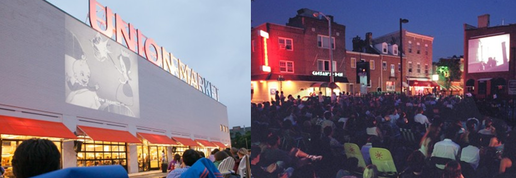Whether we think about it or not, all of us are placemakers. In 2006, when the Project for Public Places asked people what they thought about placemaking, they got hundreds responses from all over the world. IN 2010, the National Endowment for the Arts (NEA), the US Conference of Mayors (USCM), and the American Architectural Association (AIA) launched a creative placemaking initiative as a key strategy for revitalizing American cities.
In the US Capital Cities Metroplex, stretching through Baltimore and Washington DC from Belair to Fredericksburg and Hagerstown to Annapolis and the Eastern Shore, over 10 million people are placemaking in hundreds of neighborhoods in the fourth largest metro area in the US. In the two anchor cities, Baltimore and The District, placemaking is an active part of the urban livability agenda.
BaltimoreBaltimore's Inner Harbor is a model of placemaking based on natural assets. Led by the Downtown Partnership, Baltimore is launching a plan to create a network of public places linking 125 blocks of Downtown Baltimore. BMORE media features creative placemaking initiatives all over Baltimore. | the DistrictDC is placemaking at an astonishing pace, with few neighborhoods untouched by the transformation of public spaces. Union Kitchen is just one example of how placemaking works to revitalize local economies as well. CrowdsourceDC features DC triple-bottom-line placemaking initiatives. |

 RSS Feed
RSS Feed
